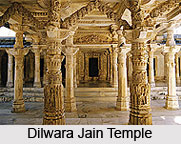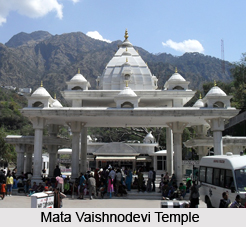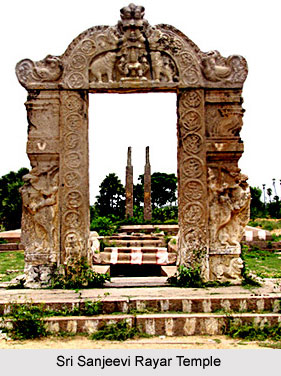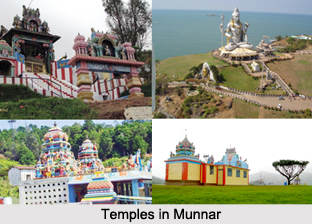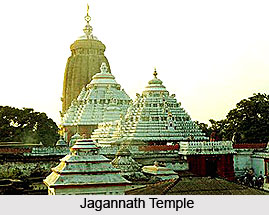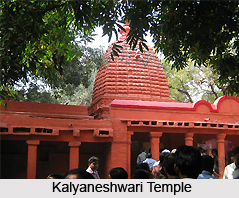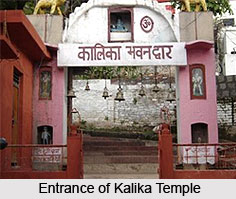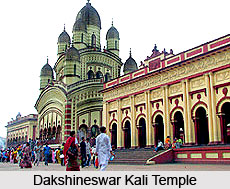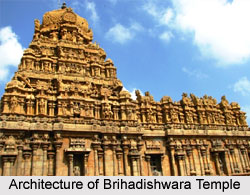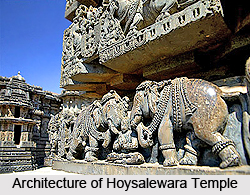 Hoysaleswara temple is a temple dedicated to Lord Shiva. It was built by King Hoysala Vishnuvardhana. It was completed in 1121 CE. As per historical data the temple derived its name from the Hoysala ruler King Vishnuvardhana Hoysaleswara. However the temple construction was initiated and financed by wealthy Shaiva citizens of the city, Ketamalla and Kesarasetti are prominent among them.
Hoysaleswara temple is a temple dedicated to Lord Shiva. It was built by King Hoysala Vishnuvardhana. It was completed in 1121 CE. As per historical data the temple derived its name from the Hoysala ruler King Vishnuvardhana Hoysaleswara. However the temple construction was initiated and financed by wealthy Shaiva citizens of the city, Ketamalla and Kesarasetti are prominent among them.
Location of Hoysalewara Temple
The Hoysaleswara Temple is situated in the town of Halebidu, alternatively referred to as Halebeedu, Halebid, and Dorasamudra. Halebidu is located within the Hassan district of Karnataka, positioned approximately 30 kilometers to the northwest of the city of Hassan. In terms of proximity to other significant temple sites in Karnataka, the Hoysaleswara Temple is approximately 16 kilometers away from the renowned Belur temples.
History of Hoysalewara Temple
The Hoysaleswara Temple reflects the excellen craftsmanship of the Hoysala period of South Indian. Needless to say, this temple occupies a significant place in the historical landscape. This period, spanning from around 1000 CE to 1346 CE, witnessed the construction of approximately 1,500 temples across 958 centers by the Hoysala dynasty. Among these, the temple in Halebidu, originally known as Dorasamudra, holds a special position.
The name Dorasamudra is believed to have originated from the Sanskrit words "Dvara" (gateway, door) and "Samudra" (ocean, sea, large water body), signifying its importance as a gateway to prosperity. Although Belur, Karnataka, served as the initial capital of the Hoysala Empire, it was under the rule of King Vishnuvardhana that Dorasamudra was established as the empire`s capital, maintaining this status for nearly three centuries
Interestingly, unlike many other surviving Hoysala temples, the Hoysaleswara Temple lacks a dedication inscription. It is likely that this inscription, along with various other original features of the temple, has been lost to time. However, an inscription discovered approximately five kilometers from the temple site, near the ruins of the Kallesvara temple in Ghattadahalli, provides valuable historical information. This inscription reveals that the construction of the temple was undertaken by Ketamalla, an officer in the service of King Vishnuvardhana. Furthermore, it documents the king`s grant of lands to support the temple`s construction, operation, and maintenance in the year Saka 1043, equivalent to 1121 CE. This temple was not an isolated construction; historical inscriptions suggest that the capital of Dorasamudra was adorned with numerous temples representing both Hindu and Jain traditions, as well as features like stepwells, ponds, and public halls (mantapas). These elements surrounded the expansive Dorasamudhra lake, creating a vibrant cultural and religious center.
The Hoysala Empire, however, faced a decline in the early 14th century when it was invaded, plundered, and ultimately destroyed by the Delhi Sultanate armies, led by Alauddin Khilji. In 1326 CE, another Delhi Sultanate army, under the command of Sultan Muhammad bin Tughlaq, targeted Belur and Halebidu, leaving a trail of destruction in its wake. The Vijayanagara Empire subsequently took control of the territory. This marked the end of the Hoysala kingdom, with King Ballala III meeting his demise in a conflict with the Madurai Sultanate`s Muslim army. Dorasamudra and its temples fell into ruin, and the once-thriving capital became known as "Halebidu," meaning "old camp or capital."
Despite the challenges and the passage of centuries, around 300 of the original Hoysala Empire temples still stand today, albeit in varying states of disrepair, scattered throughout Karnataka. Approximately 70 of these temples had been studied to some extent by 1995, shedding light on their historical significance.
The Hoysaleswara Temple, specifically, experienced a unique journey in the colonial era following the defeat of Tipu Sultan in 1799. Mysore came under British rule, and the temple ruins were among the earliest to be surveyed and photographed in the 1850s. Subsequent restoration efforts were made with good intentions but lacked comprehensive documentation. Panels from other temple ruins were repurposed to cover the Nandi mandapa, while fragments of friezes were used to repair the plinth. Consequently, the Hoysaleswara Temple, as it stands today, represents a fusion of its original Hindu temple architecture and design with stone screens, outer walls, and doors added in the 14th century. Regrettably, the towering crowning shikhara of the temple has been lost over time. Nevertheless, the temple has endured multiple rounds of repair and restoration in the 19th and 20th centuries, preserving its historical and architectural significance for contemporary generations.
Architecture of Hoysalewara Temple
The temple is two shrined, one for "Hoysaleswara" and the other for "Shantaleswara" and is mad of soapstone. The temple complex is elevated on a platform. The two shrines which are adjoining, face east and each have a hall in front. The two mandapas are connected giving a large view of the hall. Each shrine contains a simple linga. The temple interiors are simple. However the exterior looks different as many projections and recesses in the walls have been introduced. The superstructure of the hall is called sukanasi and the rows of decorated miniature roofs above the eaves of the hall have been destroyed. The temple was built at such a height that the architect could give horizontal and vertical space to depict large and small sculptures. The outer walls contain an intricate array of stone sculptures.
The temple has four porches for entry. There is one entry on the south side and two on the east side, facing two large detached open pavilions whose ceiling is supported by lathe turned pillars. All entry porches have miniature shrines. There is a sanctuary for the Lord Surya. The pavilions have images of Nandi. Originally this temple had an open mandapa but later on the outer walls were pierced with window screens that made it a close one. The window screens have no art work. The lathe turned pillars that run in rows between the north and south entrances are the only noteworthy structures in the temple interiors. The four pillars in front of each shrine are well decorated and they have madanika sculptures in their pillar brackets.
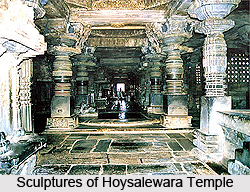 Sculptures of Hoysalewara Temple
Sculptures of Hoysalewara Temple
This temple is most well-known for its wall sculptures that run all along the outer wall. It starts with an image of dancing Ganesha on the left hand side of the south entrance and ending with another image of Ganesha on the right hand side of the north entrance. There are 240 images altogether. Most intricate sculptures are found in the lintels of the southern and eastern doorways.
There are two eaves that run around the temple. The top eave is at the roof of the temple and the second eave is about a meter below. In between there are miniature towers that have been decorated. Below the lower eaves there are wall sculptures and eight friezes which are called horizontal treatment.
Garuda pillar is another striking feature of this temple. Garudas were bodyguards of the kings and queens who lived with the royal family and their only purpose was to protect their master. The rare pillar which is on the south side depicts heroes brandishing knives and cutting their own heads.
Outer walls Carvings on Hoysalewara Temple
The outer walls of the Hoysaleswara Temple are renowned for their intricate and detailed carvings, which provide a visual narrative of Hindu epics and iconography. The carving work on these walls is structured in bands, each featuring distinct motifs, creating a captivating tapestry of artistry.
Starting from the lowest layer and ascending upwards, the bands on the outer walls depict a variety of subjects. The carvings begin with elephants, followed by lions, scrolls adorned with depictions of nature and miniature dancers, horses, scrolls displaying scenes from Hindu texts, mythical creatures known as makaras, and elegant swans. Notably, no two lions are alike in the entire span that covers 200 meters.
The primary focus of the outer wall carvings is the narration of Hindu epics. The carvings encapsulate key episodes from revered texts such as the Ramayana, the Mahabharata, and the Bhagavata Purana. These carvings serve as a comprehensive portrayal of Hindu mythology and legends. In the middle portion of the outer walls, large panels feature an extensive array of Hindu deities. This section can be regarded as a manual of Hindu iconography, presenting the entire pantheon of divine figures.
In total, the outer walls of the Hoysaleswara Temple shrines are adorned with a staggering 340 large reliefs. These reliefs predominantly convey the tales of the Ramayana, the Mahabharata, the Bhagavata Purana, and other significant Shaiva and Vaishnava Puranas, offering visitors a profound and visually captivating insight into Hindu mythology and religious traditions.
Carvings on Doorways in Hoysalewara Temple
The Hoysaleswara Temple is distinguished by its four entrances, each offering unique architectural and artistic features. The primary entrance, commonly used by modern-day visitors and located on the northern side nearest to the parking area, provides easy access to the temple premises. Additionally, there is an entrance on the southern side and two on the east side, directly facing two sizable detached open pavilions characterized by their ceiling support structures composed of lathe-turned pillars.
Originally, the temple had an open navaranga configuration, allowing the mantapa pavilions to be visible from the outside shrines, and conversely, offering a view of the exterior to those within the mandapa. However, during the reign of Hoysala king Narasimha I, significant modifications were made. The mantapa was enclosed, doors were incorporated, and intricately perforated stone screens were installed, as corroborated by an inscription discovered within the temple premises.
Each of the four entrances is adorned with dvarapalas (guardian deities) and distinctive decorations. Southern Entrance is flanked by six-foot-high dvarapalas, bedecked with jewelry, situated on both sides of the doorway. These dvarapalas originally had four hands (though some are damaged), wore jatamakuta (crown-like headgear), featured a third eye and fangs, and stood in a distinctive S-shaped tribhanga pose. They held various icons associated with Lord Shiva, such as the damaru, cobra, and trisula. Unfortunately, they suffered defacement at some point in history. In the 20th century, efforts were made to trim, restore, and re-polish the dvarapala faces, albeit resulting in a somewhat artificial appearance. Above the door lintel, a carving portrays a depiction of Nataraja performing the Tandava dance, accompanied by Nandi, other dancers, and musicians.
Similar to the southern entrance, Southeastern Entrance features two dvarapalas, with their hands partly broken but their faces better preserved. Above the door lintel, an exceptionally well-preserved carving depicts Nataraja with ten hands (one hand is damaged). To the left of Nataraja, various deities, including Narasimha, Saraswati, Brahma, Ganesha, Parvati, and others, are depicted. On the right side of Nataraja, one can observe Shiva, Parvati, Bhairava, Indrani, Keshava, and Surya.
Unfortunately, Northeastern Entrance has suffered damage over time, with the doorway showing significant deterioration. The dvarapalas are missing, though the pedestals and panels remain. The carvings above the door lintel have also experienced defacement. Presently utilized by contemporary tourists, the original dvarapalas at Northern Entrance have been lost to time. Two replacement dvarapalas, which do not perfectly match, were recovered from the vicinity`s ruins and placed here for visitors. The scene depicted above the door lintel is also damaged and exhibits inferior execution.
Adjacent to the southern doorway, within the temple`s park area, stand large statues, including one of Lord Ganesha. Originally positioned farther out at the outer gate of the temple premises, these statues sustained damage but were subsequently collected from the ruins and relocated closer to the temple for preservation.
Within the navaranga, one can identify two small niches situated opposite each other between the two temples where they converge at the transept. These niches exhibit carvings and artwork, though the statues that once occupied them are now absent. Additionally, a stone panel near the western niche bears a substantial Sanskrit inscription, inscribed in both North Indian and South Indian scripts, providing historical and contextual insights into the temple`s legacy.
Carvings on Pillars and Ceilings in Hoysalewara Temple
Within the interior of the Hoysaleswara Temple, one observes a marked contrast compared to the ornate exterior walls. However, the interior does feature notable elements, primarily in the form of lathe-turned pillars that are arranged in rows, extending between the northern and southern entrances. Of particular significance are the four pillars positioned in front of each shrine, distinguished by their ornate craftsmanship. Notably, these pillars are also the sole ones within the temple adorned with madanika sculptures in their pillar brackets.
In the central navaranga of each temple`s mandapa, one encounters a series of intricately carved pillars and a raised ceiling. Each of these four central pillars is graced by four standing madanika figures, primarily Salabhanjika figures, which predominantly depict female forms. In total, there were originally 16 standing figures on these central pillars for each temple. Regrettably, the ravages of time have taken their toll, with only 11 of these figures surviving to the present day.
Within the north temple, a mere six damaged madanakai figures have endured, while the south temple houses five relatively better-preserved examples. Furthermore, upon closer examination of the pillar capitals, it becomes apparent that there were originally figures on each of the eastern row pillars, facing the sunrise. Unfortunately, all of these figures have suffered destruction, and none have survived. Notably, the pillar located near the second eastern door exhibits two damaged madanakai figures, although the better-preserved examples are those situated in the central navaranga.
The carvings on the pillars and ceilings of the Hoysaleswara Temple offer glimpses into the artistic finesse and cultural significance of this historic site, despite the challenges posed by the passage of time and natural wear and tear.
Carvings on Sanctum in Hoysalewara Temple
The Hoysaleswara Temple complex consists of twin sanctums (garbha griha), each enshrining a Shiva linga. These sanctums are dedicated to "Hoysaleswara" Shiva, symbolizing the king, and "Shantaleswara" Shiva, representing the queen, Shantala. Remarkably, both sanctums share equal dimensions, reflecting the significance of both the royal and the consort deities.
Each sanctum assumes a square shape and is equipped with a darsana dvara, or a view doorway, oriented towards the east. Positioned around the sanctums are three niches, located on the north, west, and south sides. These niches are designed to house sacred images and sculptures. The doorways leading to the sanctums are flanked by dvarapalas, guardian deities who protect and watch over the inner sanctum. Beyond these doorways, there are sukanasi, or vestibule chambers, which serve as transitional spaces leading to the sanctum.
Above the lintel between the dvarapalas, one encounters intricate carvings that depict Shiva alongside Parvati, accompanied by other devas and devis (gods and goddesses). Notably, these carvings also feature two imposing makaras, mythical syncretic sea creatures. Perched atop these makaras, one can observe Varuna, the god of water, and his consort Varuni. The doorjambs of the sanctum entrances are adorned with purnaghatas, vessels symbolizing abundance and prosperity.
Originally, the sanctum square was surmounted by towering shikharas, which ascended towards the sky, completing the vimana superstructure of the temple. However, over the course of time, these towering structures have been lost to history, giving the temple a flat appearance. This design choice serves to maintain simplicity, allowing devotees to concentrate their attention on the spiritual symbolism within.
Additionally, within the temple complex, one encounters smaller shrines, each with its own dedicated sanctum. For instance, the Nandi shrines house a sacred Nandi bull statue within their sanctums. Similarly, the Surya shrine is dedicated to the Hindu Sun god, featuring an appropriate deity within its sanctum. These smaller shrines contribute to the comprehensive spiritual and religious experience offered within the Hoysaleswara Temple complex.
Other Monuments in Hoysalewara Temple Complex
Within the expansive precincts of the Hoysaleswara Temple complex, visitors will find several significant monuments and archaeological remnants that provide valuable insights into the historical and cultural heritage of the site.
One notable feature is the museum, overseen by the Archaeological Survey of India. This museum houses an extensive collection of ruins and temple artwork meticulously recovered from the temple complex. These artifacts allow for a comprehensive three-dimensional examination, offering visitors a deeper understanding of the temple`s history and artistic achievements.
Adjacent to the temple stands the Garuda Sthamba, commonly referred to as the Garuda pillar. While it has sustained some damage, including the loss of its upper portion, this pillar is of historical significance. It bears an inscription that, although incomplete due to wear and tear, offers intriguing insights. The decipherable portion of the inscription relates the sacrifice of General Lakshmana, his wife, and their followers following the demise of Ballala II. The central portion of the pillar features eight male figures, with four of them depicted in the act of self-sacrifice (siditale-godu). One of the sacrificers is portrayed seated in a namaste posture, preparing for the act, while others are shown in various stages of the sacrifice. These images symbolize the unwavering devotion of these individuals to their leader and their resolute commitment to accompany him in death.
The temple complex also exhibits indications of other shrines and temples that once graced the surroundings. For instance, besides the Nandi shrine, which houses the sacred Nandi bull, there was once a Chandra (Moon) monument adjoining the other Nandi. Furthermore, excavations conducted on the southwest side of the temple have revealed the remnants of a temple structure that had suffered destruction over time. These findings underscore the historical richness of the Hoysaleswara Temple complex and its broader architectural and religious context.












